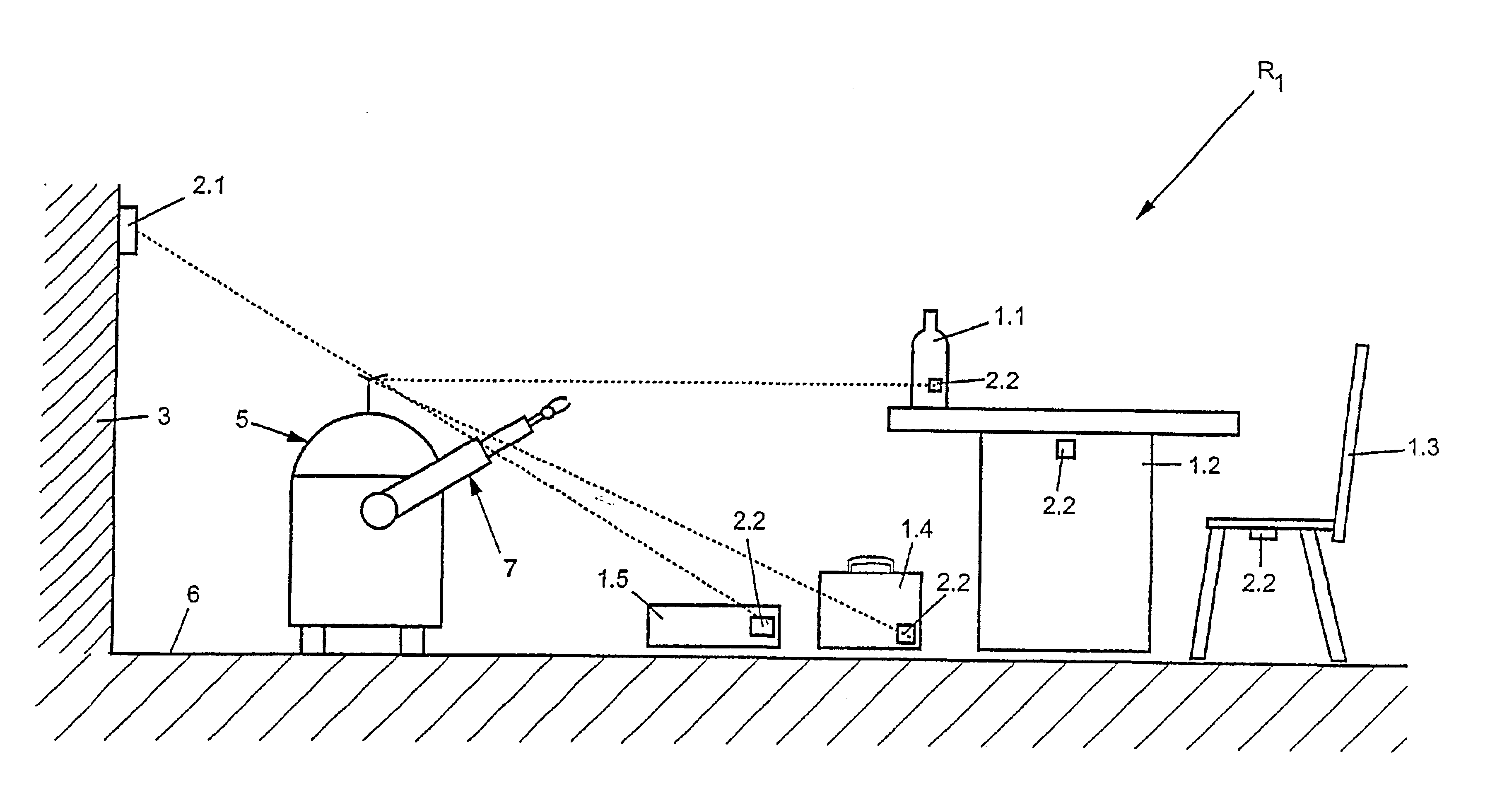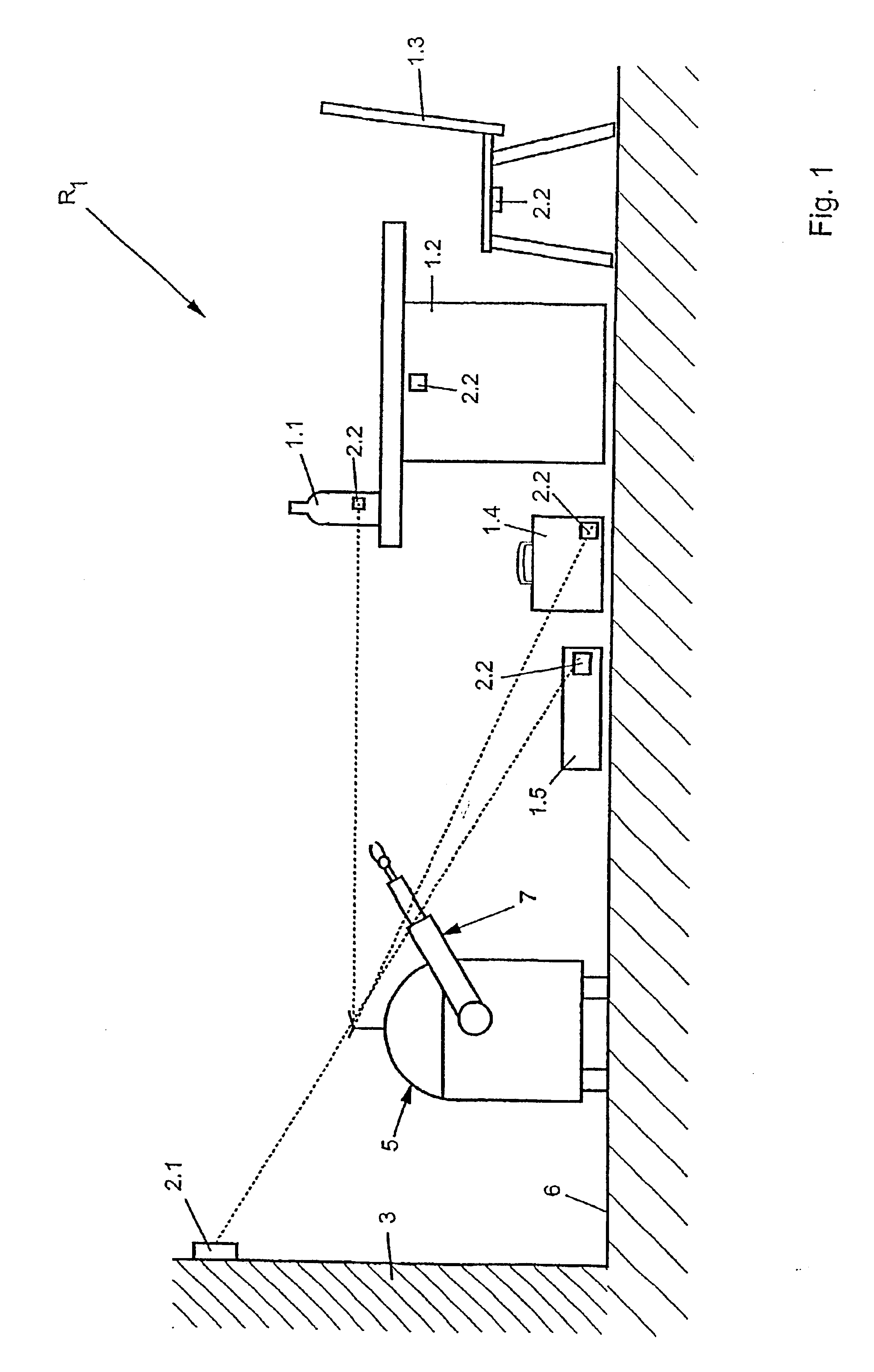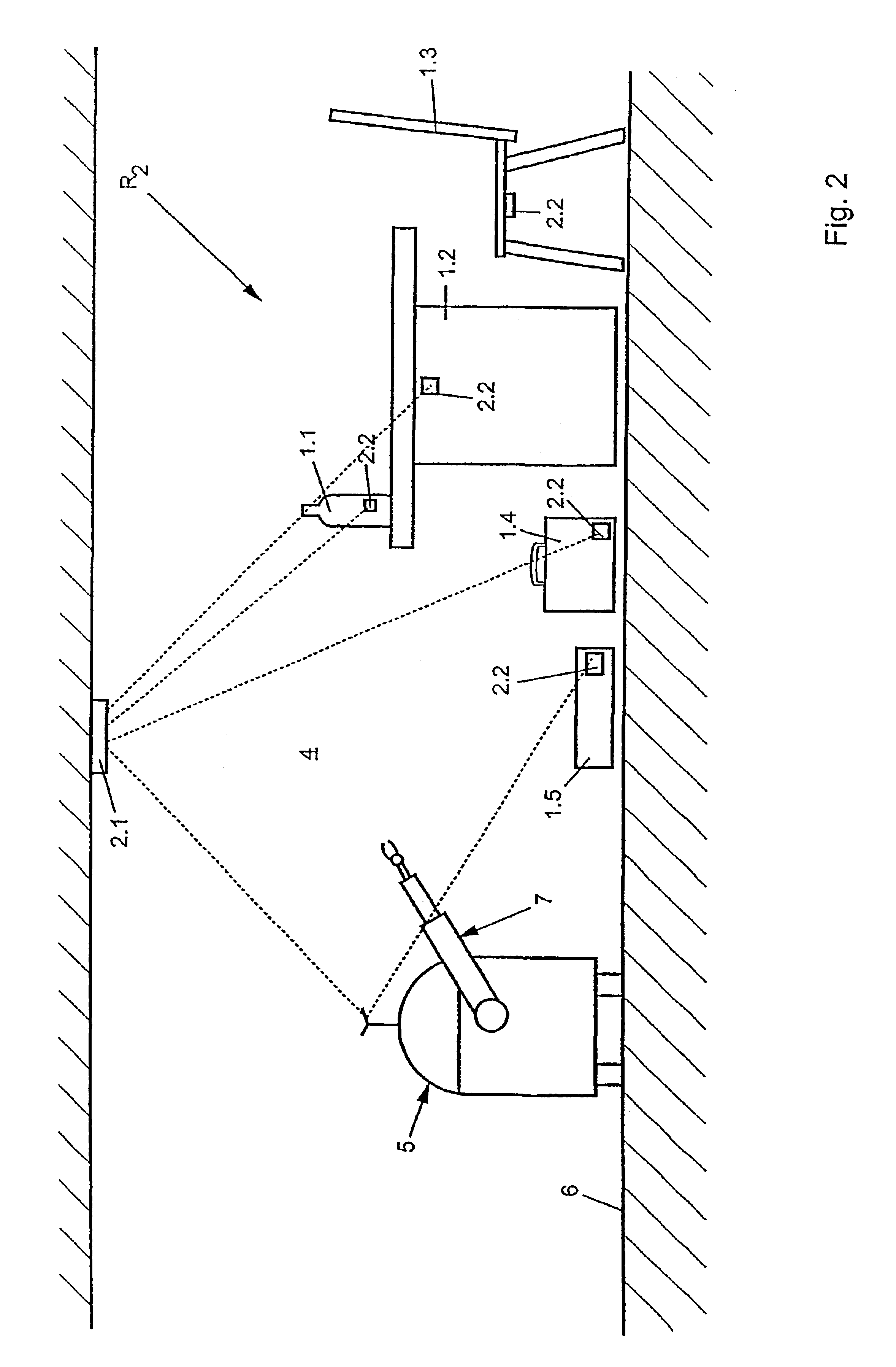Method for recognition determination and localization of at least one arbitrary object or space
- Summary
- Abstract
- Description
- Claims
- Application Information
AI Technical Summary
Benefits of technology
Problems solved by technology
Method used
Image
Examples
Embodiment Construction
[0037]With reference to FIG. 1, an inventive system R1 is illustrated for identifying, determining and localizing at least one arbitrary object 1.1 to 1.5 has a central sensor element 2.1, particularly a transmitter, which can be arranged, by way of example, on a wall 3 in a room 4.
[0038]The room 4 contains a robot 5 which can be conveyed on a foundation 6. The robot 5, particularly a service robot, can be conveyed independently and is provided with at least one gripping device 7.
[0039]Another important feature of the present invention is that every object 1.1 to 1.5 has at least one allocated sensor element 2.2, particularly a transponder.
[0040]The transponder stores a particular code, numerical code, digits or the like, with this code being sent by the transponder when an appropriate signal is emitted by the robot.
[0041]For each specific transponder or code, the robot 5 stores a corresponding association with an object 1.1 to 1.5 in the form of data. The sensor element 2.2 can be ...
PUM
| Property | Measurement | Unit |
|---|---|---|
| Weight | aaaaa | aaaaa |
| Size | aaaaa | aaaaa |
Abstract
Description
Claims
Application Information
 Login to View More
Login to View More - R&D
- Intellectual Property
- Life Sciences
- Materials
- Tech Scout
- Unparalleled Data Quality
- Higher Quality Content
- 60% Fewer Hallucinations
Browse by: Latest US Patents, China's latest patents, Technical Efficacy Thesaurus, Application Domain, Technology Topic, Popular Technical Reports.
© 2025 PatSnap. All rights reserved.Legal|Privacy policy|Modern Slavery Act Transparency Statement|Sitemap|About US| Contact US: help@patsnap.com



